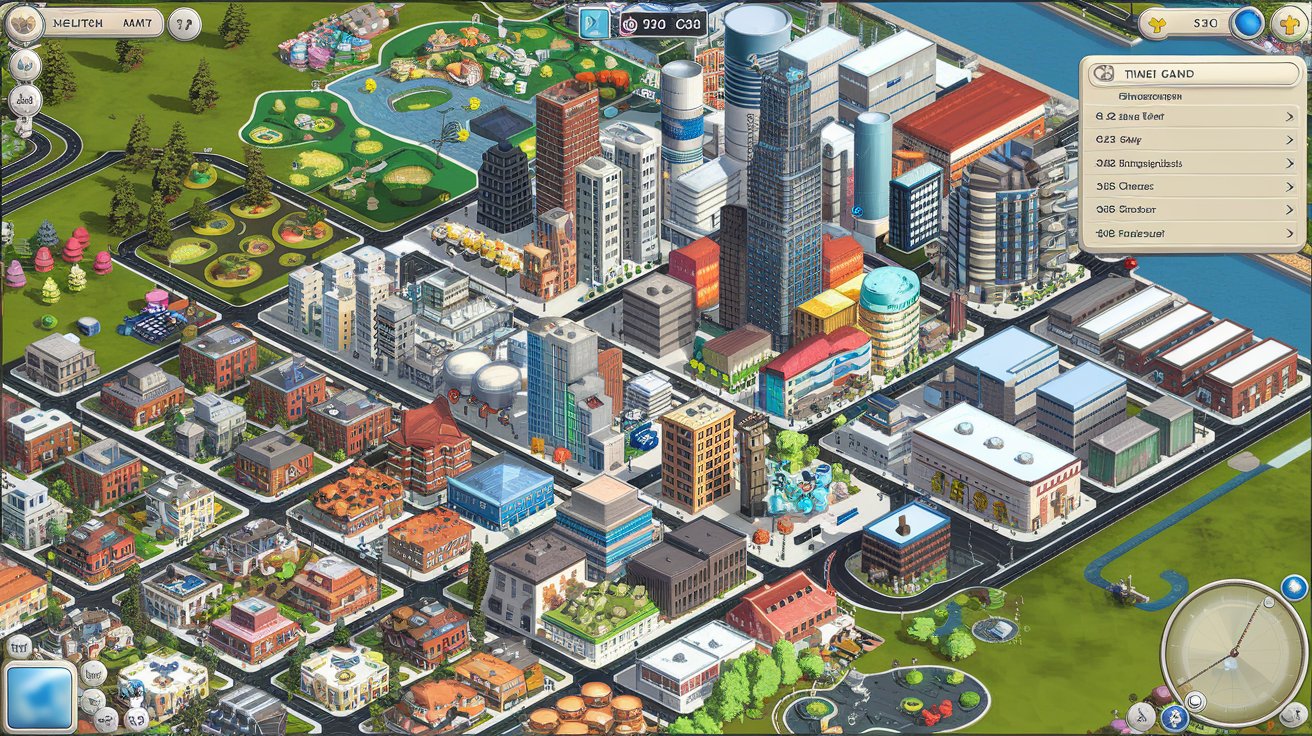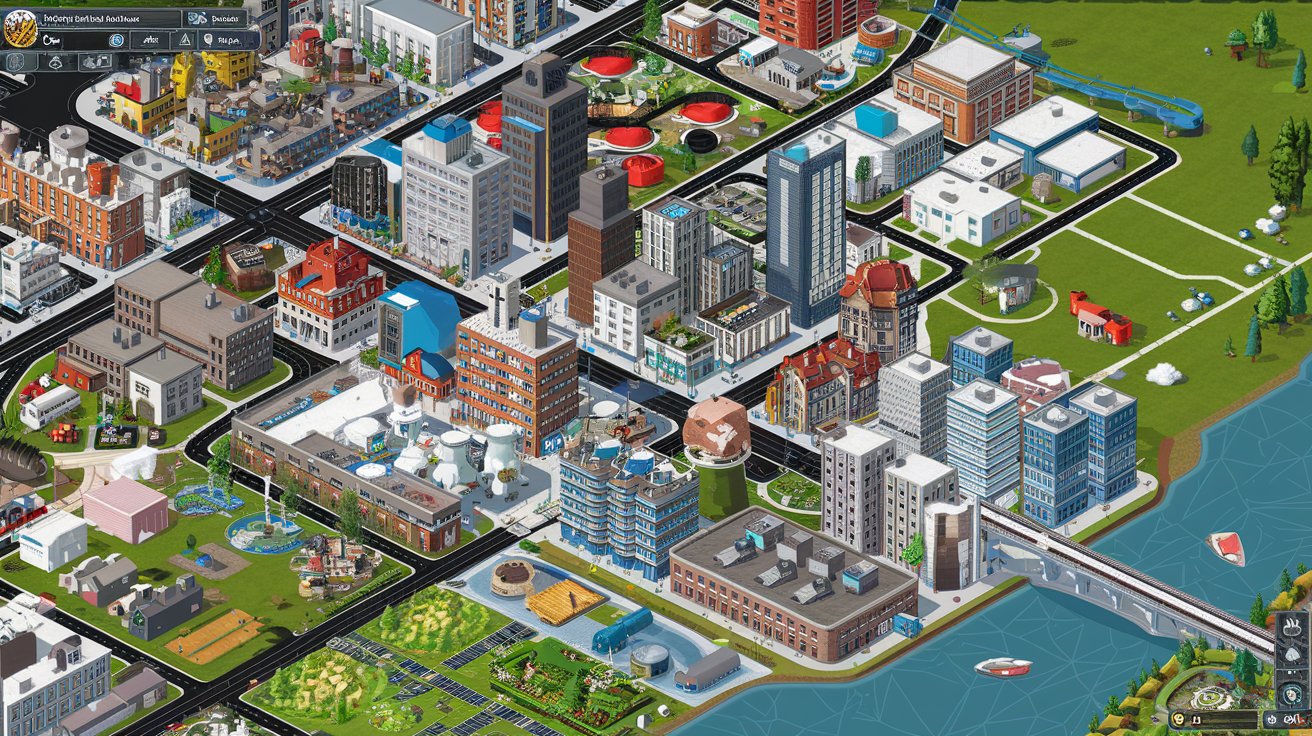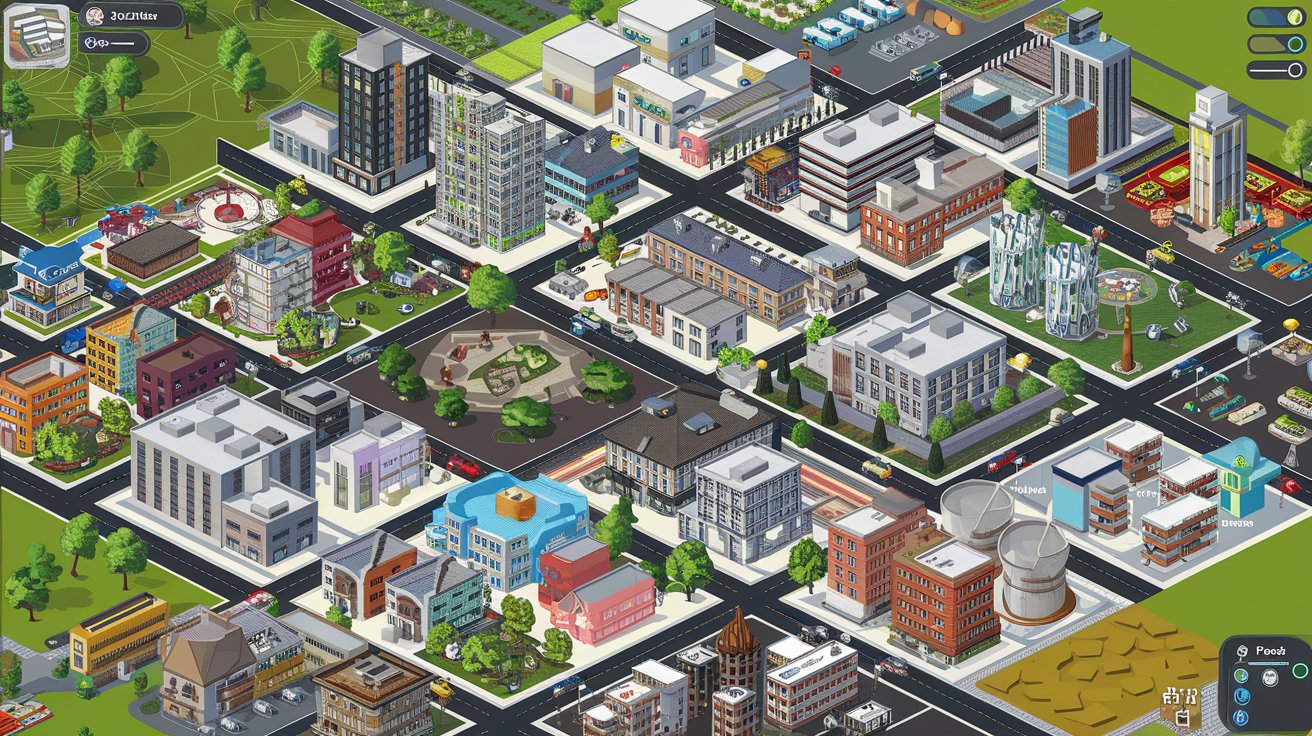City-building games let you step into the shoes of an urban planner, architect, and mayor all at once, crafting sprawling metropolises from humble beginnings. Whether you’re laying roads in Cities: Skylines, managing resources in SimCity, or shaping history in Anno 1800, these games blend creativity with strategy to create an addictive experience. In this 1500+ word guide, we’ll explore how to play city-building games and share expert tips on designing a thriving metropolis that balances growth, efficiency, and beauty. Ready to break ground? Let’s build a city that stands the test of time!
What Are City-Building Games?
City-building games are a subgenre of simulation and strategy gaming where you design, construct, and manage a city. Your goal? Turn a blank canvas into a bustling urban hub—or a utopian paradise—while juggling citizen needs, budgets, and infrastructure. From the pixelated charm of SimCity 2000 to the modern polish of Cities: Skylines, these games test your planning skills and reward foresight.
The appeal lies in their sandbox nature—you’re free to craft your vision, whether it’s a gridlocked megacity, a green eco-haven, or a historical port. Success demands more than plopping down buildings; it’s about creating a living, breathing metropolis. Let’s dive into the essentials and learn how to make your city thrive.
The Basics of City-Building Games

Before you start designing, here’s what drives most city-building games.
Core Mechanics
- Resources: Money, materials, or population—the fuel for growth.
- Zones: Residential, commercial, and industrial areas that define your city’s layout.
- Infrastructure: Roads, power, water, and services like schools or hospitals.
- Citizen Needs: Happiness, employment, and safety keep your population content.
Gameplay Loop
- Start Small: Begin with basic roads, power, and a few homes.
- Grow: Zone areas, add services, and expand as your population rises.
- Manage: Balance budgets, traffic, and disasters while upgrading your city.
Winning (or Thriving)
Unlike many games, city-builders often lack a strict “win” condition. Success is measured by population size, citizen satisfaction, or personal goals—like building a skyline to rival New York or a pollution-free utopia.
How to Play: Building Your Metropolis Step-by-Step
Let’s walk through the process of creating a thriving city, from first road to towering skyscrapers.
Step 1: Plan Your Foundation
Every great city starts with a solid base:
- Choose Your Map: Pick a location with flat land for easy building or rivers for trade and power (e.g., hydropower in Cities: Skylines).
- Lay Roads: Start with a simple grid or radial design—keep it flexible for growth.
- Power and Water: Build a power plant (coal’s cheap early) and water pumps with pipes to sustain your first residents.
Step 2: Zone and Grow
Zoning kickstarts your population:
- Residential: Homes for citizens—start small with low-density zones.
- Commercial: Shops and offices to employ people and generate tax revenue.
- Industrial: Factories for jobs and goods, but keep them away from homes to curb pollution.
Step 3: Add Essential Services
Keep citizens happy and healthy:
- Education: Schools boost skills, unlocking high-tech industries later.
- Healthcare: Clinics prevent population dips from illness.
- Safety: Police and fire stations reduce crime and disasters.
Step 4: Manage Traffic and Expansion
Growth brings challenges—chief among them, traffic:
- Upgrade Roads: Widen streets or add highways as density rises.
- Public Transit: Buses, trains, or subways cut congestion—start early to build habits.
- Expand Smart: Add new zones near existing infrastructure to avoid overstretch.
Step 5: Optimize and Beautify
Late-game is about refinement:
- Specialize: In Anno 1800, focus on trade goods like rum; in Cities: Skylines, create tourism districts.
- Go Green: Wind farms or recycling reduce pollution—citizens love it.
- Aesthetics: Parks, landmarks, and thoughtful layouts boost appeal and happiness.
Best Techniques for a Thriving Metropolis

Designing a successful city takes more than random building—here’s how to master the craft.
1. Plan Ahead with Scalability
- Grid with Room: Use a grid layout but leave gaps for future highways or transit hubs.
- Zone Gradually: Don’t over-zone—let demand dictate growth to avoid empty lots.
- Think Big: Reserve space for airports, universities, or skyscrapers down the line.
2. Master Traffic Flow
Traffic is the lifeblood—and bane—of your metropolis:
- One-Way Streets: Direct flow to prevent jams, especially near industry.
- Roundabouts: Efficient intersections for busy areas.
- Mass Transit: Subways in dense cores, buses in suburbs—layer them for coverage.
3. Balance Your Budget
Money makes the city grow:
- Start Cheap: Use coal power and basic services early—upgrade later.
- Tax Smart: Keep taxes at 9-12%—high enough for profit, low enough to avoid exodus.
- Invest Wisely: Spend on education and transit early—they pay off long-term.
4. Prioritize Citizen Happiness
Happy citizens stick around:
- Services First: Don’t skimp on schools or hospitals—uneducated or sick populations falter.
- Green Living: Parks and low pollution keep spirits high.
- Jobs: Match residential growth with commercial and industrial zones—unemployment sparks abandonment.
5. Adapt to Challenges
Every game throws curveballs:
- Disasters: Earthquakes (SimCity) or storms (Cities: Skylines)—build defenses like dams or shelters.
- Pollution: Relocate factories or go renewable to clean up.
- Demand Shifts: If commercial demand spikes, rezone fast to capitalize.
Mastering the Art of City Design
Beyond mechanics, city-building is about vision and finesse. Here’s how to elevate your game.
Aesthetics Matter
- Landmarks: Iconic buildings (e.g., Eiffel Tower in Cities: Skylines) add flair.
- Natural Beauty: Integrate rivers, hills, or forests into your layout—don’t bulldoze everything.
- Districts: Theme areas—industrial ports, downtown cores, suburban sprawl—for personality.
Efficiency Is King
- Service Overlap: Cluster schools and clinics for max effect without waste.
- Road Hierarchy: Use small roads for neighborhoods, arterials for connections, highways for speed.
- Pipe Planning: In SimCity, separate sewage from water intake—nobody wants brown tap water.
Experiment and Learn
- Try Mods: Cities: Skylines mods like Traffic Manager unlock deeper control.
- Fail Forward: A bankrupt city teaches you what not to do next time.
- Mix Styles: Blend grids with organic curves for a unique look.
Top City-Building Games to Play

Here’s a rundown of standout titles:
Cities: Skylines
- Developer: Colossal Order
- Standout: Deep traffic and modding options.
- For: Modern planners who love detail.
SimCity (2013 or 4)
- Developer: Maxis
- Standout: Classic formula with disasters and charm.
- For: Nostalgia buffs and casual builders.
Anno 1800
- Developer: Ubisoft Blue Byte
- Standout: Historical trade and production chains.
- For: Fans of economy and aesthetics.
Banished
- Developer: Shining Rock Software
- Standout: Survival focus with no money—just resources.
- For: Hardcore minimalists.
Top Tips for Metropolis Mastery
- Start Small: Perfect a village before chasing a skyline.
- Watch Metrics: Happiness, traffic, and budget overlays guide your fixes.
- Plan for Transit: Build with buses or trains in mind from day one.
- Learn from Pros: YouTube tutorials (e.g., City Planner Plays) reveal tricks.
- Have Fun: A “bad” city can still be a blast to build.
Why City-Building Games Are Addictive
These games tap into our love of creation and control. They’re sandboxes where you dictate every street, skyscraper, and story—balancing chaos with order. Whether you’re chasing efficiency, beauty, or survival, they offer endless replayability and a chance to leave your mark.
Conclusion: Build Your Dream City
Designing a thriving metropolis in city-building games is about planning, adapting, and dreaming big. Lay a smart foundation, manage traffic and money, and keep your citizens happy, and you’ll craft a city worth bragging about. So fire up your game of choice, grab your virtual blueprints, and start building.
What’s your favorite city-building game or design trick? Share below—I’d love to see your urban masterpieces!

Zareb Saleh is a journalist at Gulf Today and a ghostwriter for Gameoholic, specializing in gaming, technology, and digital culture. With a keen eye for industry trends, he delivers insightful stories that engage and inform readers.




